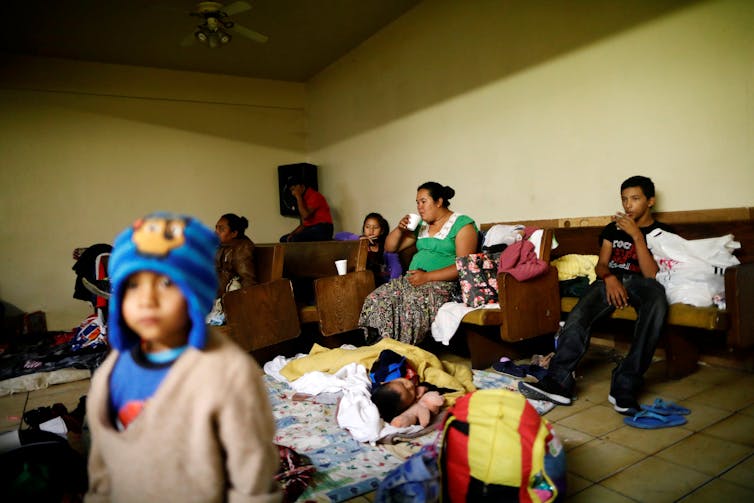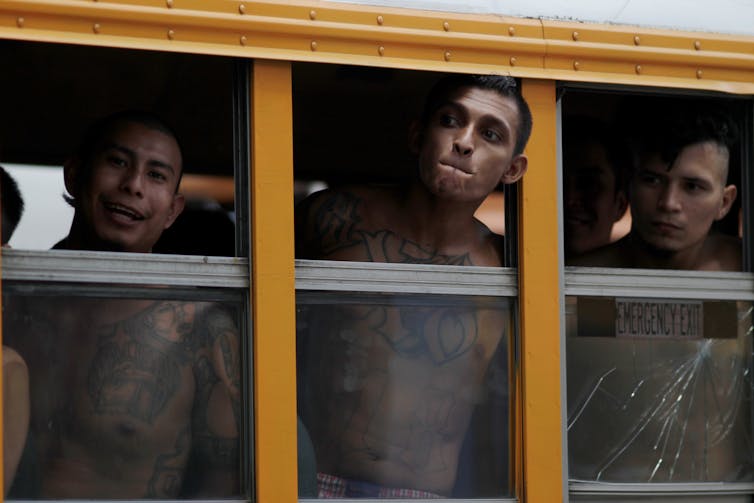Do abused women need asylum? 4 essential reads
- Written by Catesby Holmes, Global Affairs Editor, The Conversation US
Attorney General Jeff Sessions on June 11 reversed an appeals court ruling that granted asylum to a Salvadoran woman[1] who had fled sexual, emotional and physical abuse back home, upending nearly a decade of legal precedent about who should qualify as a refugee.
In 2009, the Obama administration determined[2] that foreign women who suffer severe sexual or domestic abuse from which they are unable to escape, in countries where the government cannot protect them, may deserve asylum as members of a persecuted “particular social group.”
This ruling opened the door for women who feared dying at their partners’ hands to seek the same protection as those fleeing, for example, female genital mutilation – though in practice only a handful of asylum-seekers[3] have successfully argued a domestic violence case in U.S. immigration court.
Sessions’ decision, which immigration experts say will primarily impact immigrant flows from Central America, reopens a long-running argument over what constitutes a need for asylum.
Here, The Conversation’s scholars illuminate this complex immigration debate.
1. What is asylum?
Under international law, countries must offer asylum to migrants who can prove they have a “credible fear” of certain kinds of violence at home. Asylum-seekers must have suffered persecution related to race, religion, nationality, political opinion or their particular social group.
“The rights of refugees – those forced to leave their country because of war or persecution – are enshrined in the 1951 Convention for Refugees and its subsequent 1967 protocol,” explains Parvati Nair of the United Nations University[4].
But individual countries may decide how to interpret these U.N. agreements. With Sessions’ ruling, the Trump administration has taken the position that domestic abuse is “private violence,” not persecution.
The boundary between migrant and asylum-seeker can indeed be blurry, Nair says. “Many displaced people today defy the parameters used by policymakers to define who is entitled to what rights.”
Those parameters, passed in the aftermath of WWII, are more than a half-century old.
2. Women’s particular fears
Persecution also looks different for men and women[5], says Ariadna Estévez, a North American studies scholar at the National Autonomous University of Mexico.
“According to my research, Mexican men are usually displaced for reasons of criminal and state violence,” she says. They are police informants who have been exposed, business owners who refuse to pay extortion to cartels, journalists, activists or victims fleeing drug-related crime.
“For women, however, sexual violence is the major push factor,” Estévez explains. Her studies find that rape, gender-based violence and sex trafficking are the main reasons Central American and Mexican women are forced to migrate.
 Many female Central American asylum-seekers bring their children with them when they escape from domestic abuse.
Reuters/Edgard Garrido
Many female Central American asylum-seekers bring their children with them when they escape from domestic abuse.
Reuters/Edgard Garrido
3. The danger of being a Latin American woman
That is not surprising since, as Estévez writes, “several studies have shown that Latin America is the worst place in the world to be a woman[6].”
She cites a 2014 Gallup survey showing that Latin Americans were the least likely in the world to say that women are treated with respect and dignity. The study attributes these feelings to widespread sexual violence and harassment against women and children, in combination with “machista” culture.
For the past few years, El Salvador has been listed among the world’s deadliest countries for women. And in Mexico, Estévez says, “the systemic killing of women since the mid-1980s has been so severe that it led to the coining of the word ‘feminicide,’ and its codification as a serious crime.”
Rampant violence against women persists in Mexico despite the launch of a national institute for women’s issues, the establishment of official protocol for investigating gender-based crimes and legislation against domestic abuse. According to a 2016 joint report by the Mexican government and the U.N., a “good part” of the 40,000 female homicides that occurred between 1985 and 2014 in Mexico were never even investigated.
Sessions’ June 11 ruling specifically rejects the Obama-era notion that women abused in a such a context – places with pervasive violence against women, which the government cannot or will not control – have a “credible fear” of violence.
4. Are Central Americans migrants or refugees?
Abused women were not the only refugee group Sessions has specifically excluded. The attorney general also said that violent recruitment by gangs is not grounds for asylum in the U.S.
“An increasing number of individuals are now arriving at the U.S. southwest border because of crime, violence and insecurity in Central America,” says Jonathan Hiskey[7], a migration scholar at Vanderbilt University.
With 60 murders per 100,000 people in 2017, El Salvador was one of the world’s deadliest places. Almost 4,000 people were killed there last year.
 Members of the Barrio 18 Gang, which together with MS-13 has helped make El Salvador one of the deadliest places in the world. Many young Salvadorans in cities say they cannot avoid joining a gang.
Reuters/Jose Cabezas
Members of the Barrio 18 Gang, which together with MS-13 has helped make El Salvador one of the deadliest places in the world. Many young Salvadorans in cities say they cannot avoid joining a gang.
Reuters/Jose Cabezas
Honduras’ murder rate has dropped markedly in recent years, but with 42.8 murders per 100,000 people in 2017, it is still one of the world’s most dangerous places that’s not a war zone.
Hiskey’s research shows that fear – not American jobs, as Trump has often suggested – is what drives many migrants to leave home.
“The strongest predictor of someone having an ‘intent to emigrate,’” he writes, “was whether they had been the victim of crime multiple times in the previous 12 months.”
Rather than trying to sneak across the U.S. border, Hiskey says, these migrants typically voluntarily surrender and request asylum in the United States.
The odds of getting it were always incredibly slim. Now, these refugees stand no chance.
Editor’s note: This article is a roundup of stories from The Conversation’s archive.
References
- ^ reversed an appeals court ruling that granted asylum to a Salvadoran woman (www.nytimes.com)
- ^ Obama administration determined (www.theguardian.com)
- ^ only a handful of asylum-seekers (www.immigrantjustice.org)
- ^ explains Parvati Nair of the United Nations University (theconversation.com)
- ^ Persecution also looks different for men and women (theconversation.com)
- ^ Latin America is the worst place in the world to be a woman (theconversation.com)
- ^ Jonathan Hiskey (theconversation.com)
Authors: Catesby Holmes, Global Affairs Editor, The Conversation US
Read more http://theconversation.com/do-abused-women-need-asylum-4-essential-reads-98223

